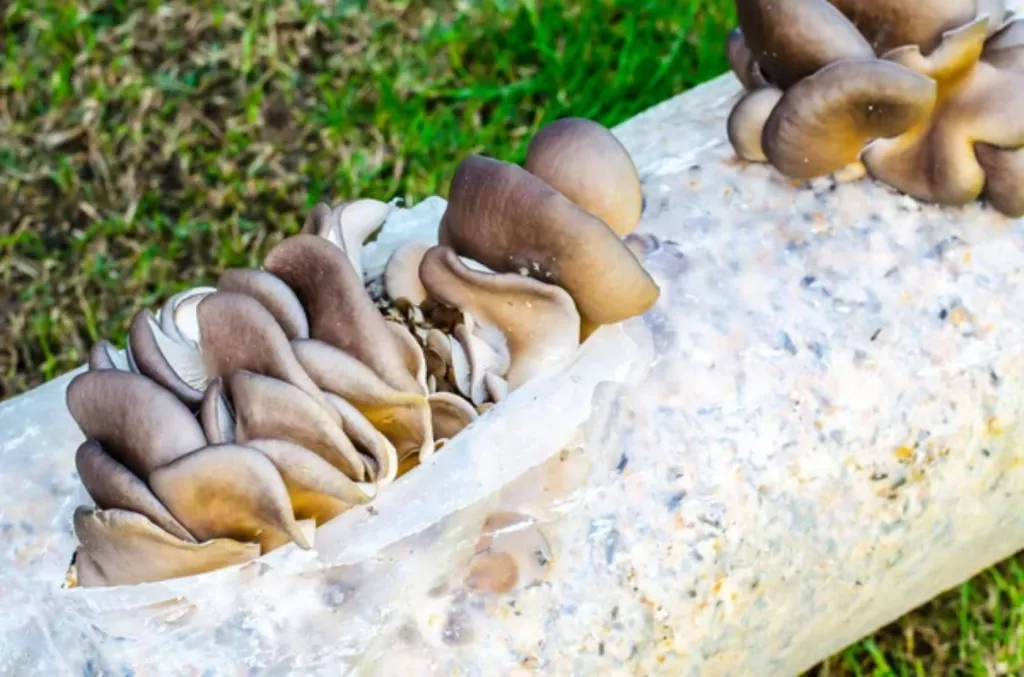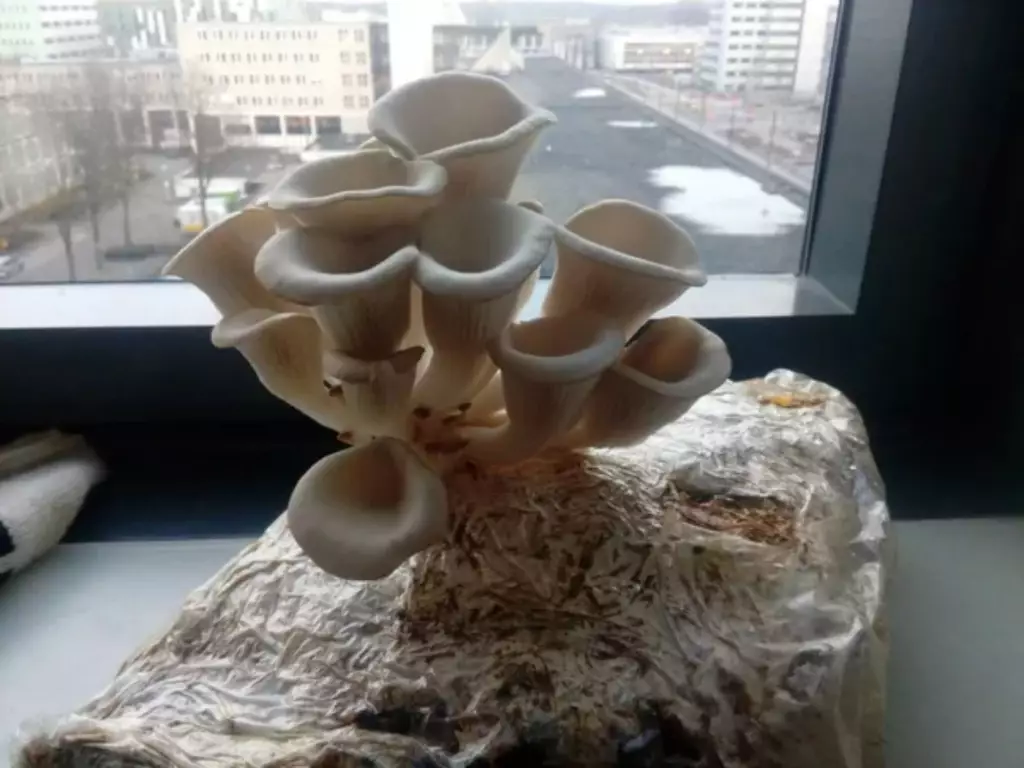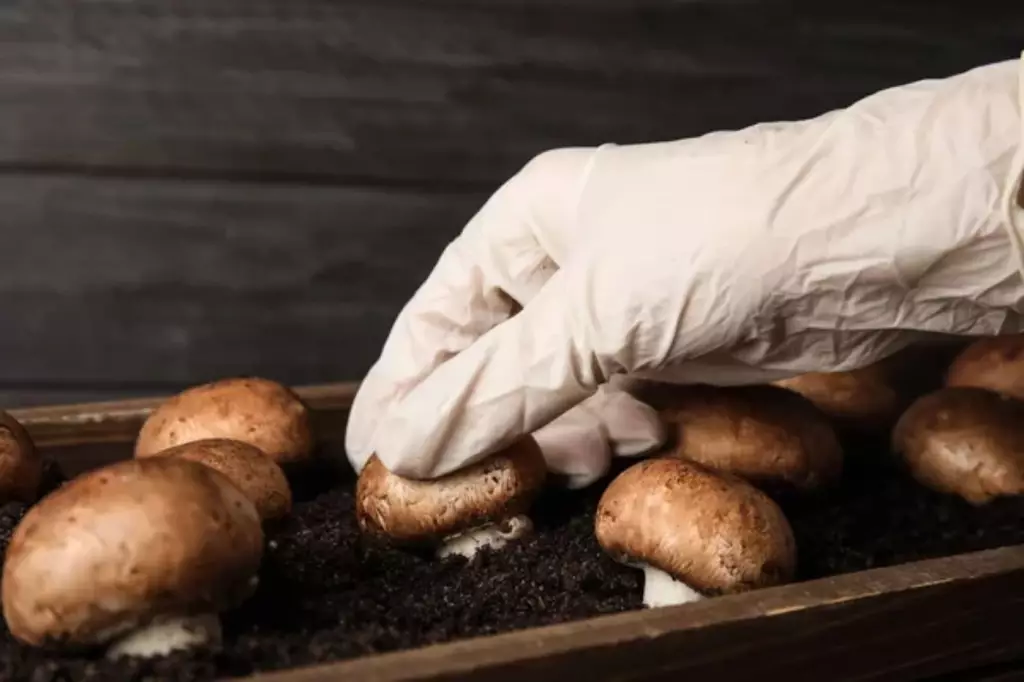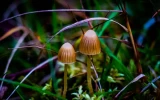Ideal Shotgun Fruiting Chamber Temperature & Conditions
Different types of mushroom fruiting chambers are used to grow mushrooms. One of the easiest and cheapest recommended types of fruiting chambers for beginners is a shotgun fruiting chamber. A shotgun fruiting chamber’s success in growing mushrooms relies on a specific set of ideal growing conditions.
A shotgun fruiting chamber requires a temperature range between 60 and 65°F (15.5 and 18°C) and a relative humidity level of 75–90%. Good air exchange should also be maintained while lowering the CO2 levels inside. Keep your chamber in a location with indirect sunlight – as direct light can dry out your mushrooms.
A shotgun fruiting chamber offers the ideal humidity and fresh air exchange ratio for mushroom fruiting through the use of natural air currents. Let's get to know more about how shotgun fruiting chambers work and whether this is the right type of fruiting chamber for you.
Summary
- The ideal conditions for a successful fruiting chamber are the following: a temperature range between 60 and 65°F, a relative humidity within 75% and 90%, good airflow and ventilation, and indirect light exposure.
- A shotgun fruiting chamber provides a perfect balance of humidity and fresh air exchange to induce fruiting in mushrooms by using natural air currents.
- For inducing fruiting in fully colonized PF tek cakes and grow kit bags, a shotgun fruiting chamber is the best option.

On this page:
Ideal Growing Conditions for Shotgun Fruiting Chamber
In the wild, ideal weather conditions and factors such as temperature, humidity, air exchange, and light exposure are what trigger mushrooms to fruit. The goal of a fruiting chamber like a shotgun fruiting chamber is to mimic these ideal conditions.
Therefore, the ideal growing conditions that must be maintained if you opt to fruit your mushrooms using a shotgun fruiting chamber are as follows:
-
Temperature: The range must be between 60 and 65°F (15.5 and 18°C), but may vary depending on the type of mushroom species. Know more about the optimal fruiting temperatures for different mushroom species and how you can mimic them using a shotgun fruiting chamber.
-
Humidity: Relative humidity level must be between 75-90%, with 80% as the standard level
-
Indirect light exposure: Although some mushrooms, like maitake mushrooms, need complete darkness during the incubation period, once colonization is done and the fruiting process begins, they need indirect light exposure.
In the wild, sunlight signals the underground mycelium that it has reached the surface of its substrate and can safely start fruiting.
- Fresh air exchange: Ensuring good airflow or ventilation inside your shotgun fruiting chamber is key to success in fruiting your mushrooms. This must be paired with lowering the CO2 levels inside the fruiting chamber as too much CO2 can cause “legging” or long-stemmed mushrooms.
Increasing fresh air flow and decreasing the CO2 levels resemble the natural conditions wherein mushroom mycelium reaches the surface, which has more fresh air than the underground.

In most cases where the local climate is favorable, a fruiting chamber is not really needed, and you can grow your mushrooms even on kitchen counters, on logs, or in mushroom beds. But in areas with extreme temperatures, setting up fruiting chambers is needed to create ideal fruiting conditions.
A shotgun fruiting chamber (SGFC) is the easiest and cheapest type of fruiting chamber to build and only requires minimal maintenance. You will only need a clear plastic tote container with drilled holes and damp perlite at the bottom to create a suitable chamber to let your mushrooms fruit.
This fruiting chamber has been named after its scattered pattern of ventilation, which resembles “shotgun bullet holes”. This type of fruiting chamber allows for a more controlled environment with factors such as humidity, temperature, and air exchange being considered.
A shotgun fruiting chamber is a good start for beginners in mushroom growing because this type of fruiting chamber is suitable for Pf tek cakes or mushrooms grown in bags like oyster or shiitake mushrooms.
Before placing the mushroom grow bags in a fruiting chamber, let them incubate first to allow substrate colonization. Once the mycelium has fully colonized the substrate, you can decide how you will provide the ideal fruiting conditions to let your mushrooms produce fruiting bodies.

A Shotgun Fruiting Chamber Works by Using Natural Air Currents
One dilemma in growing mushrooms is finding the perfect balance between maintaining high humidity and providing fresh air exchange. This is because too much water can also detrimentally affect the growth of mushrooms and may even drown them.
Additionally, overwatering the mushrooms can hinder air exchange and may cause anaerobic bacteria to develop and eventually choke the mushrooms. However, a properly set-up shotgun fruiting chamber offers a solution to perfectly balance humidity and fresh air exchange using natural air currents.
-
The drilled holes on the surface of the tote container are dedicated to fresh air exchange. When the wind blows, fresh air enters the chamber through these holes. The air reaches the damp perlite, which causes the moisture in the perlite to evaporate and create a humid environment inside the chamber.
-
Warm air from the perlite evaporation rises along with the heat generated by the mycelium growth and pulls the humid air to the perlite.
-
When the warm air flows up and exits the holes on the top of the container, more fresh air enters the bottom side of the tote.
The whole design of a shotgun fruiting chamber allows good airflow within the chamber without lowering the humidity inside.
Brief Comparison Between Shotgun and Mono Tub Fruiting Chamber
Although monotubs and shotgun fruiting chambers look similar with the use of a clear tote and drilled holes all over the tote, they are used differently and have varied differences, which are laid out in the table below:
| Shotgun fruiting chambers | Monotubs | |
|---|---|---|
| Size of holes | Contains many small holes measuring 0.25 inch each | Contains a few holes which measure 2 inches per hole |
| Airflow requirement | Must be in a space with no competing airflow | Can be placed in an area with a fan without directly aiming at the tub |
| Use/Application | Holds completely colonized PF tek cakes or grow kits until fruiting | Incubation and fruiting are done in the monotub so grain spawn and substrate are both added inside |
| Hole cover | SGFC does not need hole covers | Holes of monotub are covered during the incubation phase and a filter to cover the holes is used during fruiting phase |
| Material used to hold moisture | SGFC uses damp perlite to maintain humidity inside | Uses vermiculite to keep moisture |
Monotubs need to maintain a higher temperature and humidity as compared to shotgun fruiting chambers. The optimal temperature range for fruiting mushrooms is generally between 68 and 75°F (20 and 24°C), and the ideal relative humidity range is between 90 and 95%.



